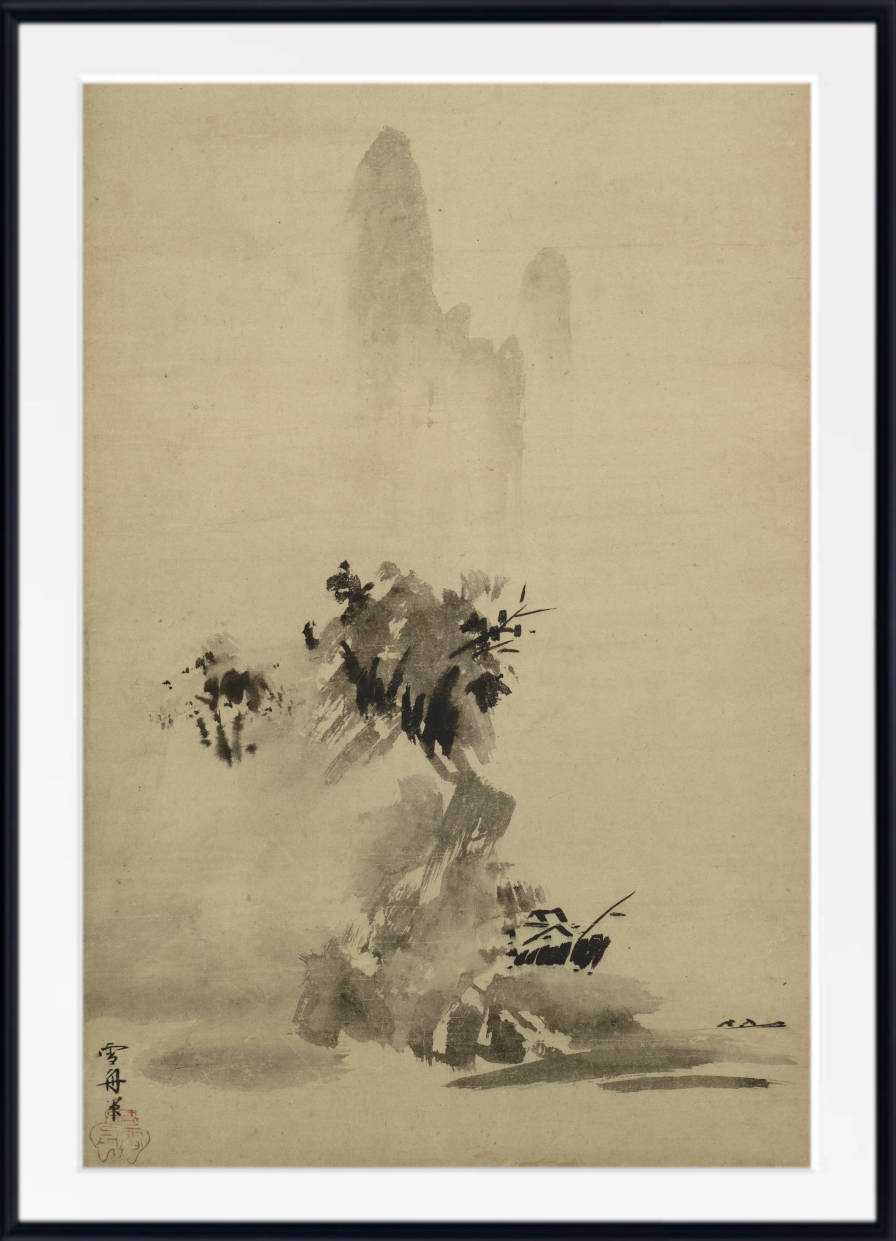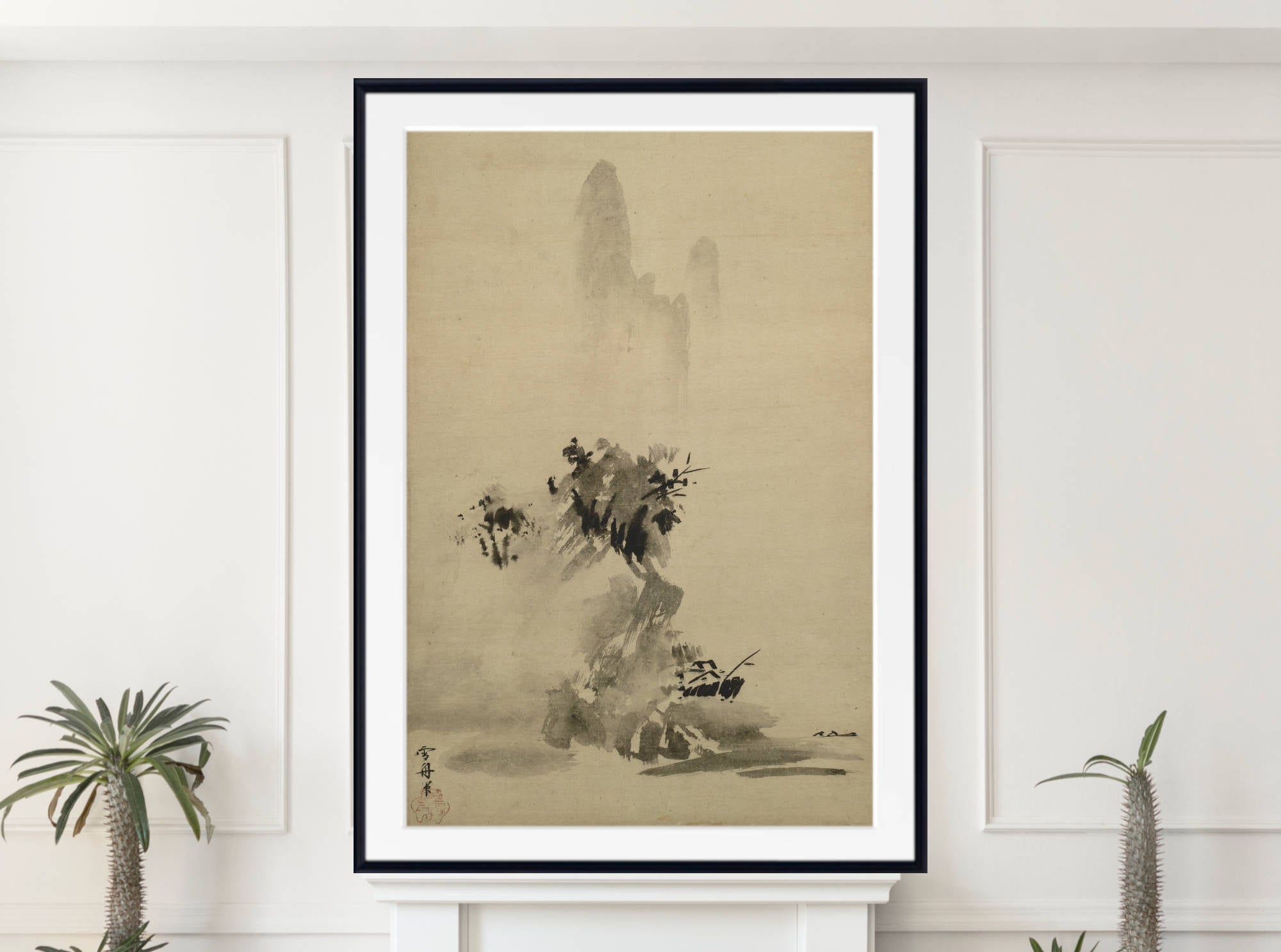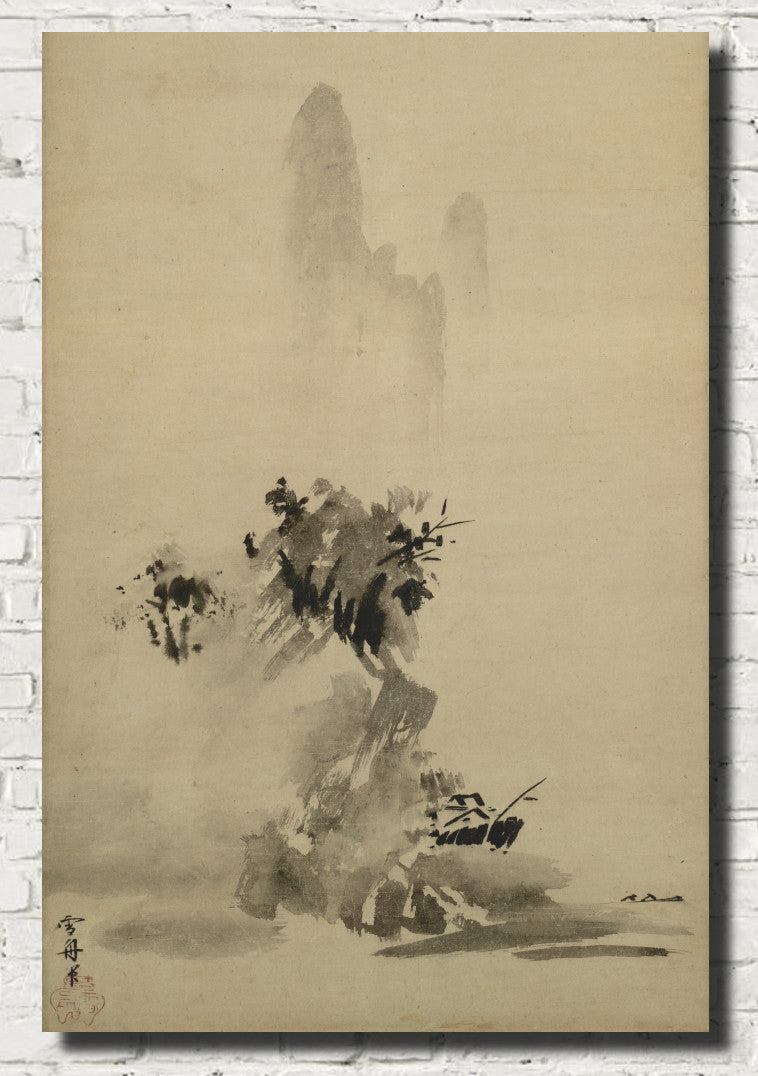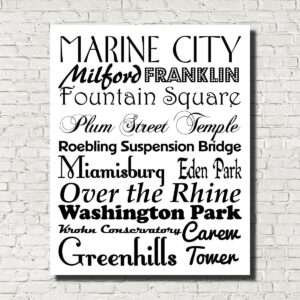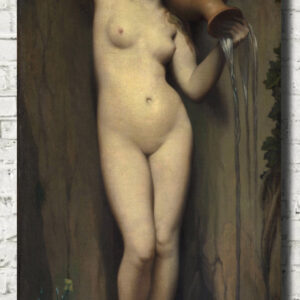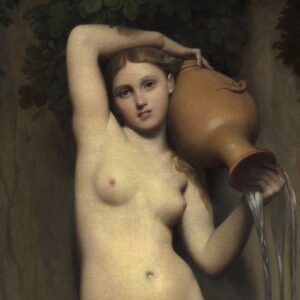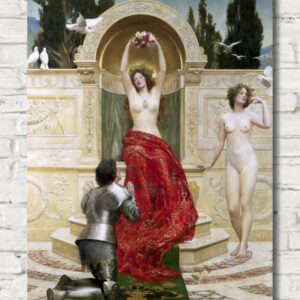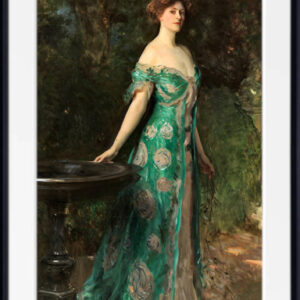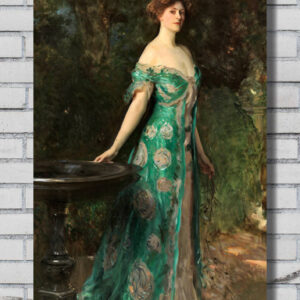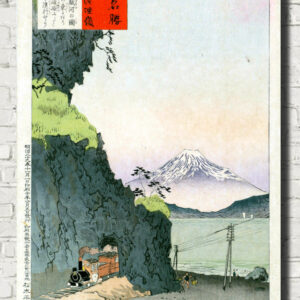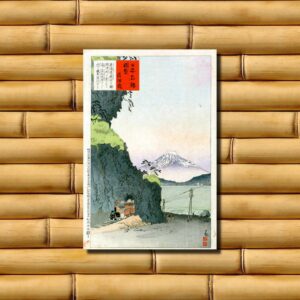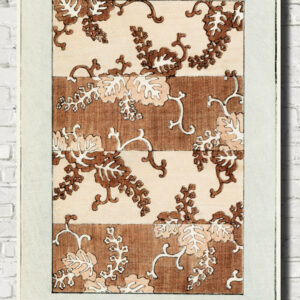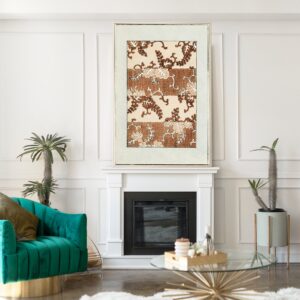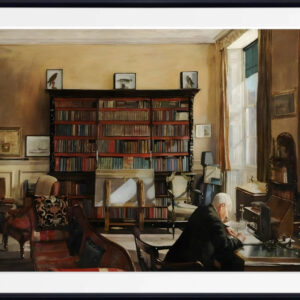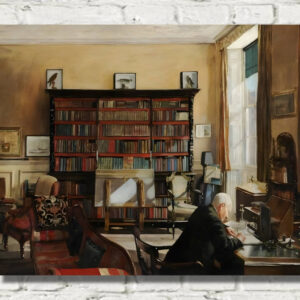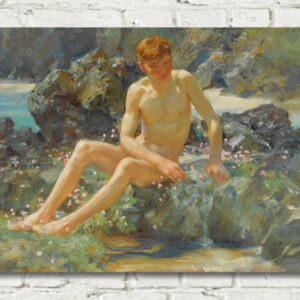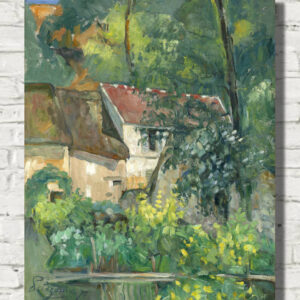Sesshū Tōyō Fine Art Print, Japanese Splashed Ink Landscape, Haboku-Sansui
Sesshū Tōyō Fine Art Print, Japanese Splashed Ink Landscape, Haboku-Sansui
Haboku sansui is a splashed-ink landscape painting on a hanging scroll created in 1495 by the Japanese artist Sesshū Tōyō during the Muromachi period. This ink wash painting is classified as a National Treasure of Japan and currently held by the Tokyo National Museum.
The complete scroll is also available as a fine art print or canvas panel.
Overview of Haboku-Sansui
A Zen Buddhist monk and painter, Sesshū Tōyō (雪舟等楊) developed suibokuga (水墨画) paintings using Chinese ink (墨, sumi), which are made with dark and light shades on silk or paper. The monochromatic style can resemble calligraphy. Despite its name, this work does not fall into category of “broken ink” (破墨, haboku) but rather “splashed ink” (溌墨, hatsuboku). In this manner, the artist avoids hard outlines; instead shapes are shown by washes of color in lighter or darker tones.
The piece gradually unveils itself to the observer. From amorphous forms emerge hints at mist-shrouded mountains in the distance; while up close there appear cliffs and shrubs against which nestle a triangular roofline with sloping banner for wine shop behind vertical lines forming fence. Below these features lies flat expanse representing body of water interrupted only by two figures seated rowing boat rightmost portion.
The scroll is 148.6 by 32.7 centimetres (58.5 in × 12.9 in)[3]. It has an inscription from the artist stating that it was painted in Suo Province during April or May 1495, when he was 76 years old according to Edo period dating system used here. He gave this painting to Josui Sōen because he asked him for something tangible showing their teacher-student relationship after leaving him in Suō Province (now part of Yamaguchi Prefecture) on his way home to Engaku-ji Temple at Kamakura. So Sesshū must have thought about what kind of legacy would be passed down through generations when writing these words as well as mentioning Tensho Shubun who studied under Taikō Josetsu besides saying that both Li Zai’s works along with Zhang Yousheng’s were examined during his visit China. However, it is not likely that he could meet Li Zai because this person died much earlier than the moment when our hero arrived in Middle Kingdom.
Sesshū Tōyō – Artist Details
Sesshū Tōyō (雪舟 等楊) (known as Oda Tōyō beginning in 1431, also known as Tōyō, Unkoku, or Bikeisai; 1420 – 26 August 1506) was the most prominent Japanese master of ink and wash painting from the middle Muromachi period. He was born into the samurai Oda family (小田家), before being brought up and educated to become a Rinzai Zen Buddhist priest. However, early in life he displayed a talent for visual arts, and eventually became one of the greatest Japanese artists of his time, widely revered throughout Japan.
What does the term ‘haboku splashed ink’ mean?
This technique uses the so-called splashed-ink method to depict mountains–or landscape with mountains–and other natural features by tossing or squirting ink from a brush or the hand in such a way that volume is expressed and the texture of crags and rocks is created.
What is meant by “splashed ink”?
In this technique, dark ink is rapidly applied over light washes that are still wet, resulting in an indistinct, soft appearance where contour lines are not clearly defined and details are not precisely delineated–a style which engenders non-rational or intuitive thinking associated with Zen Buddhist spiritual practice.
What does “broken ink” refer to?
In haboku (‘broken ink’), there are no outlines; instead different tonal values created by layers of shading using various intensities of washes along with areas of splashed-in wash give an illusion of depth suggesting three dimensionality for mountains trees rocks etcetera in a composition
All prints are made using archival art stocks and UV pigment inks to give up to 200 years life. Prints are sold unframed and unmounted.

